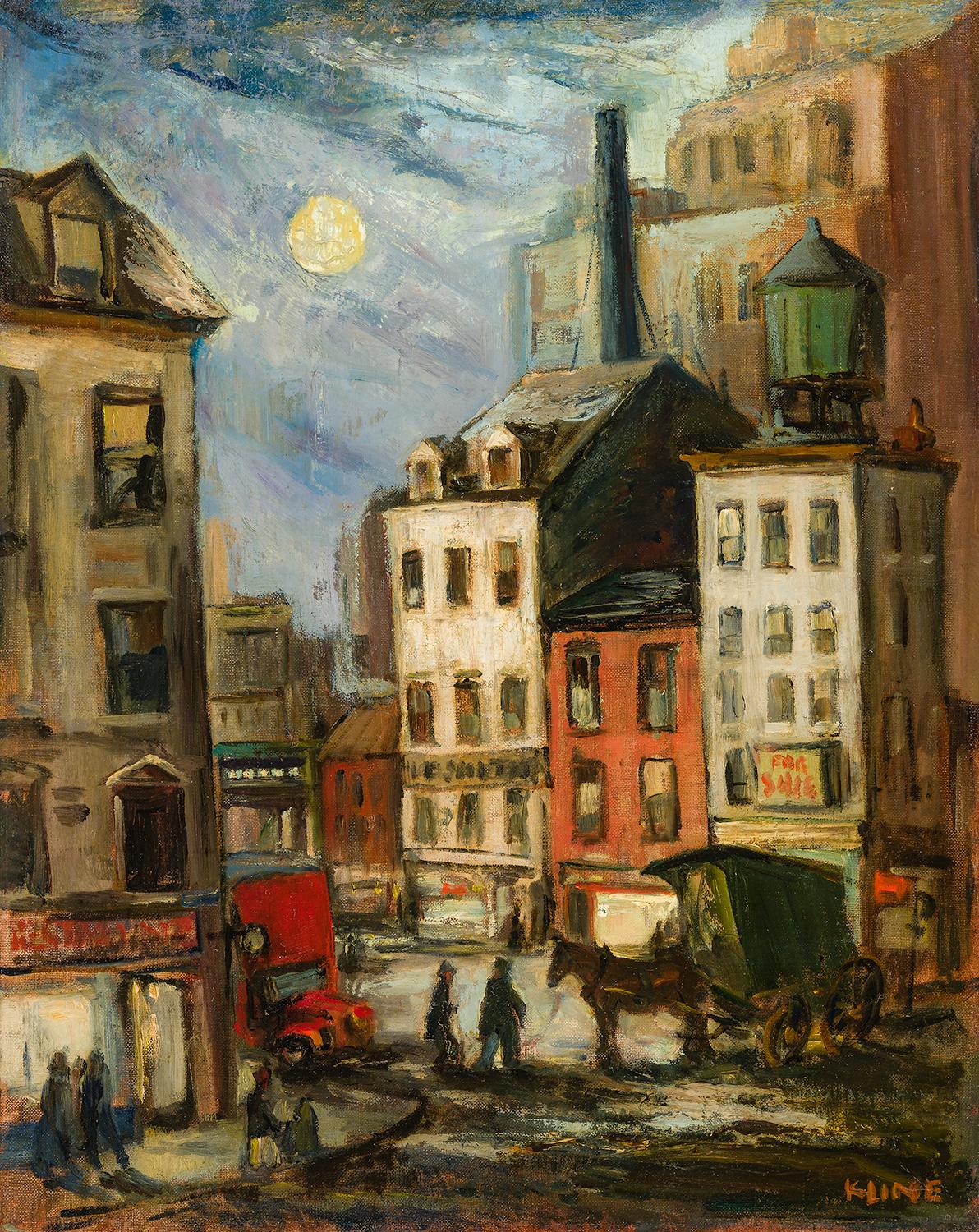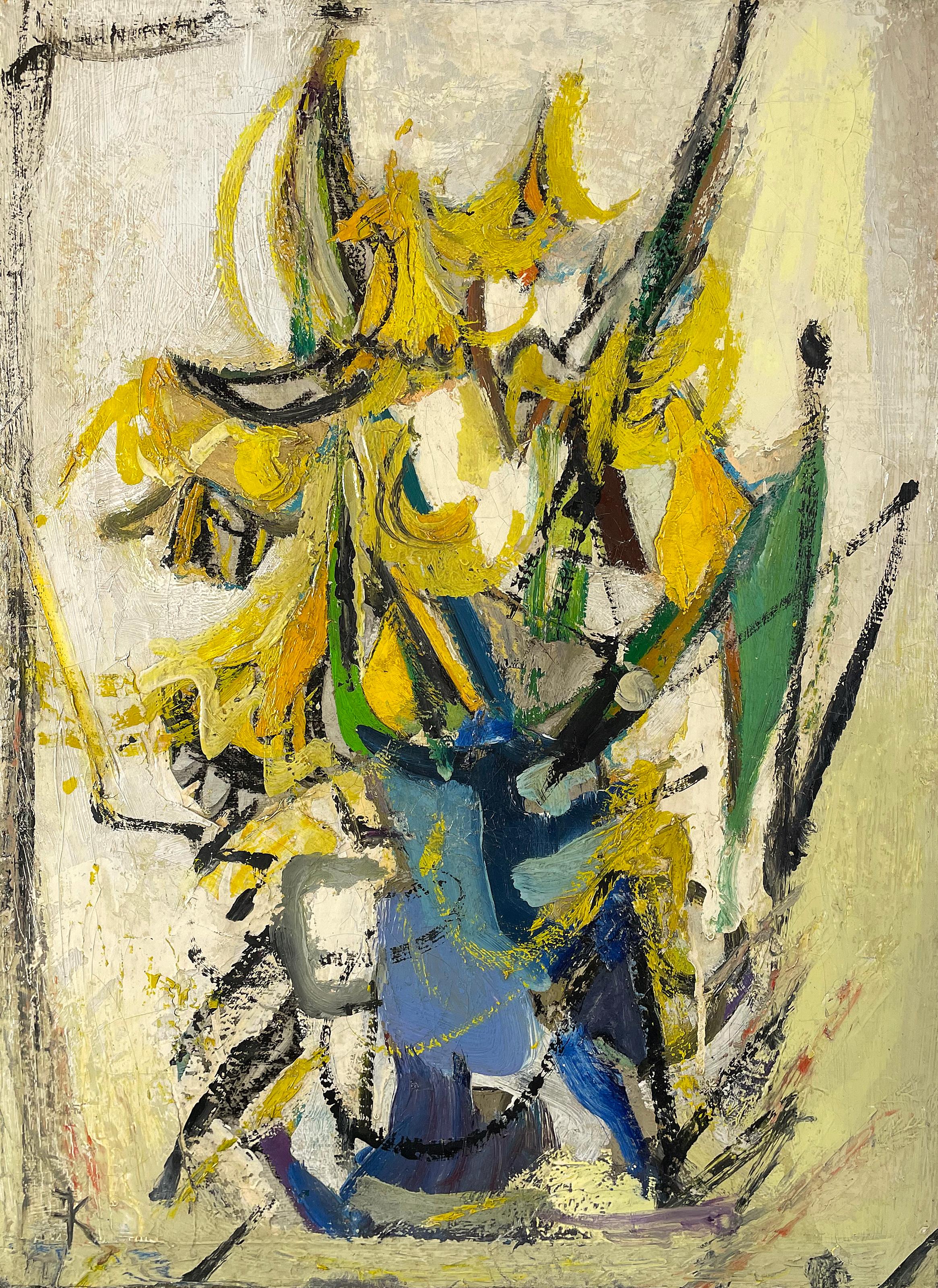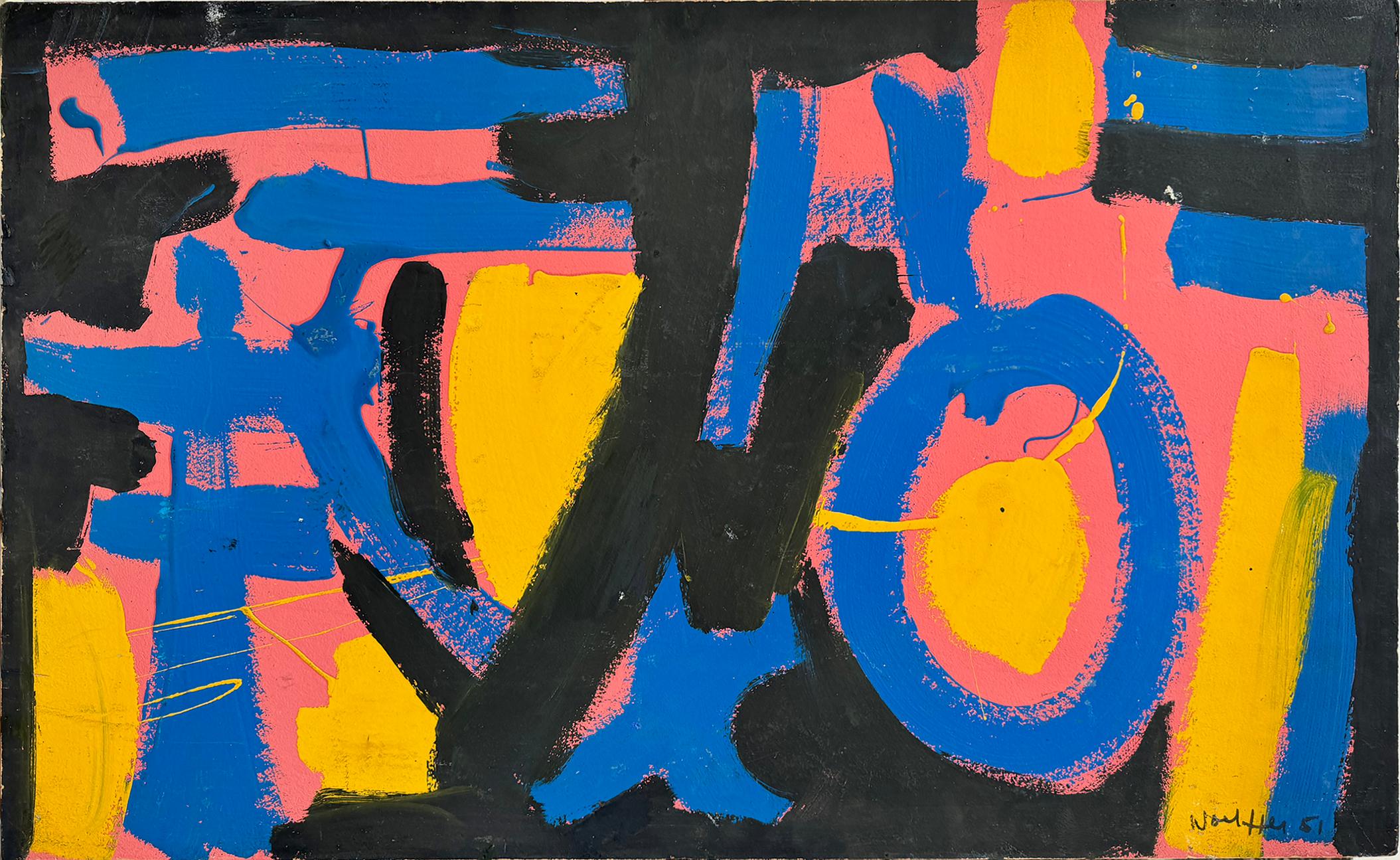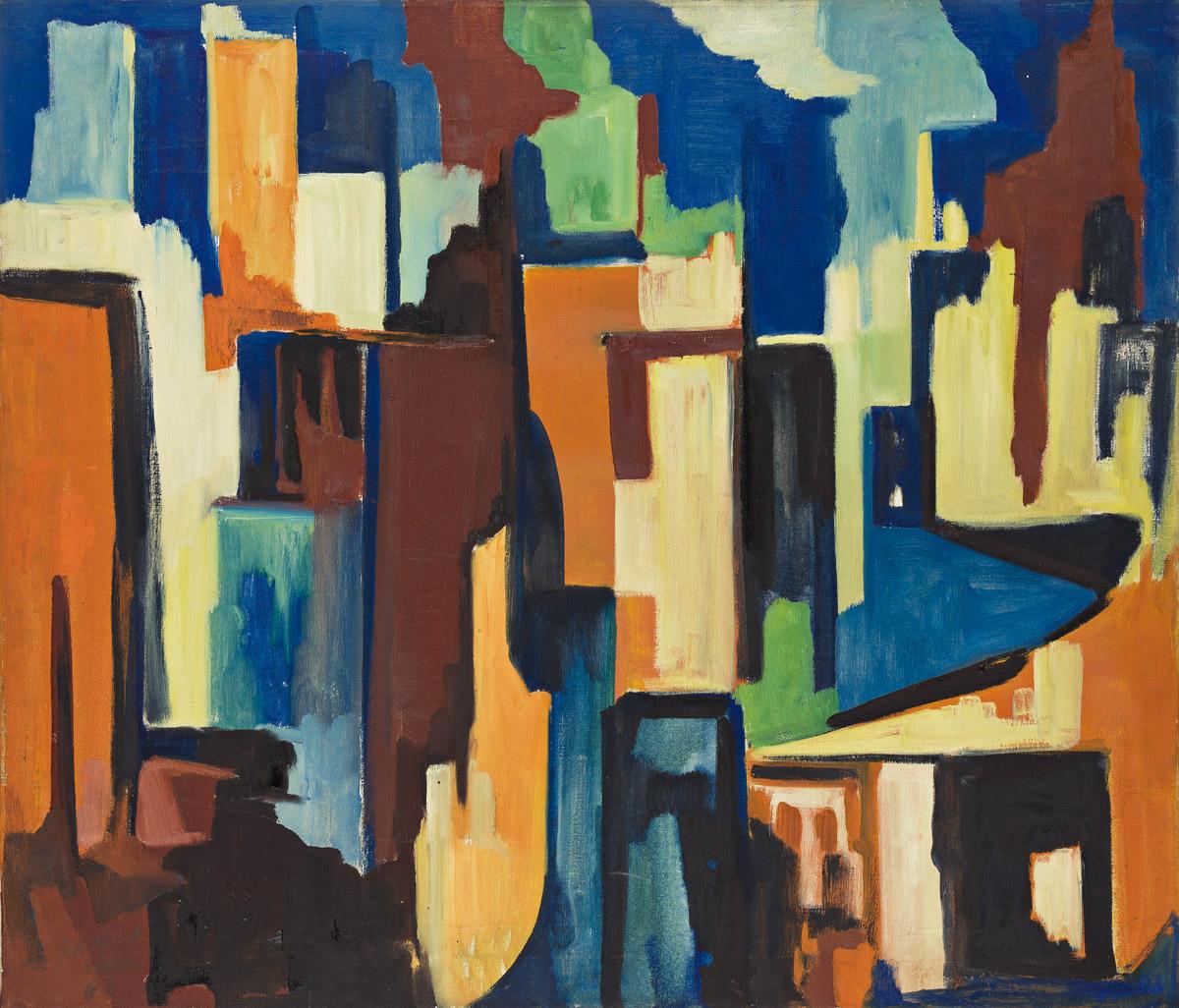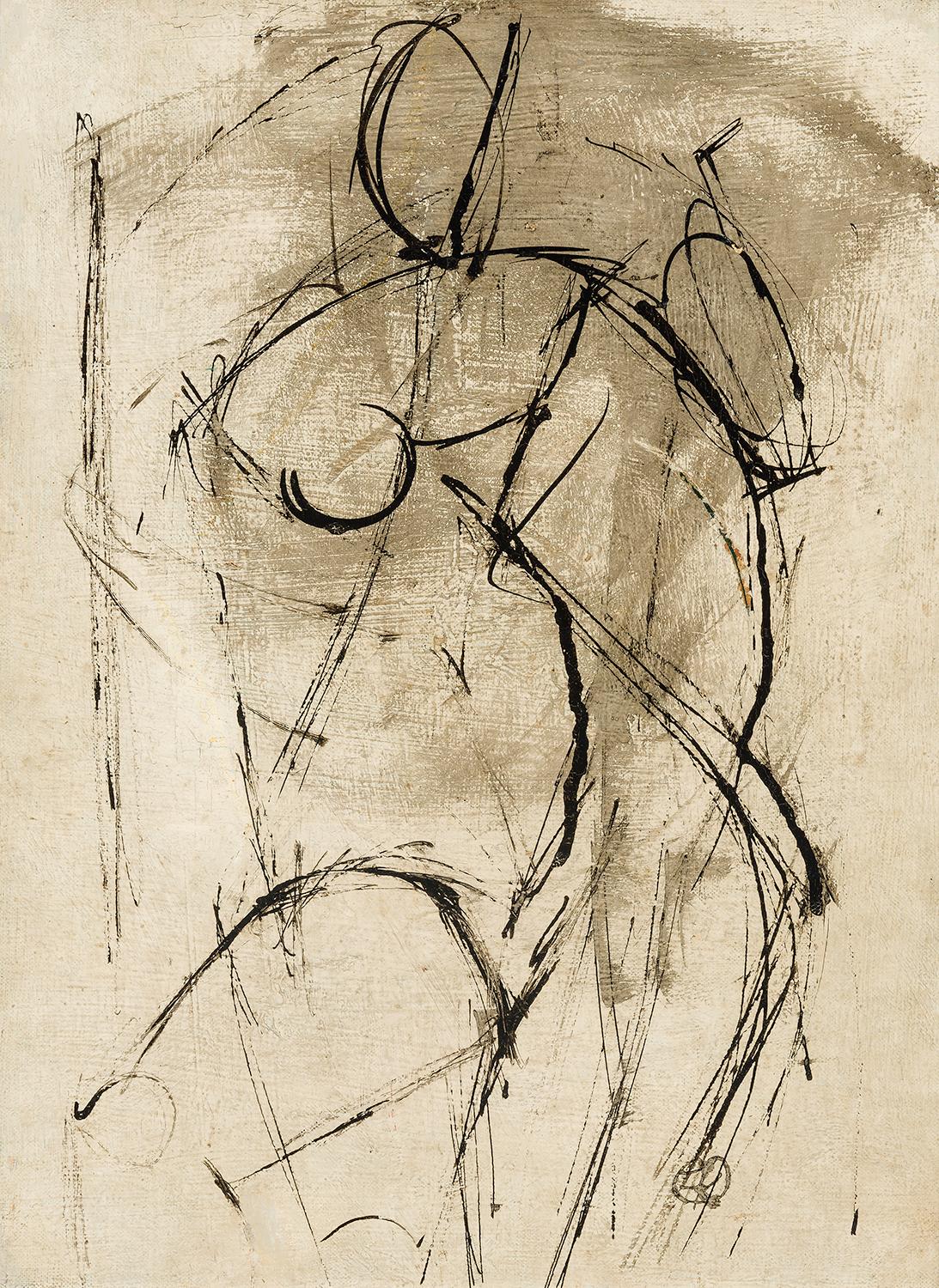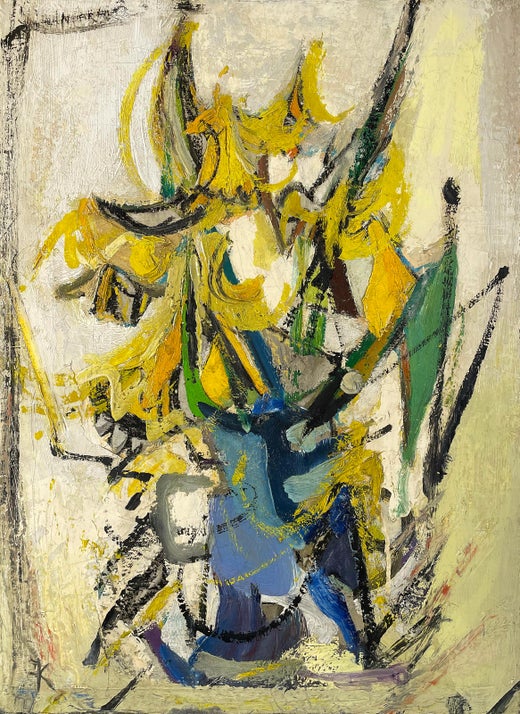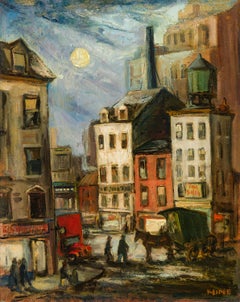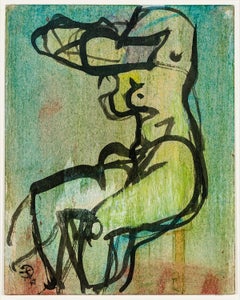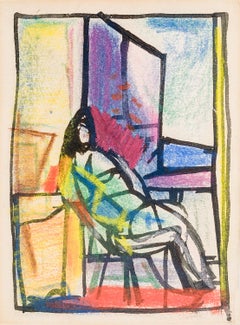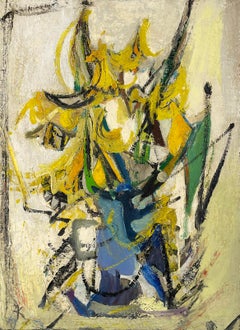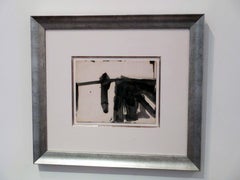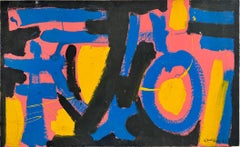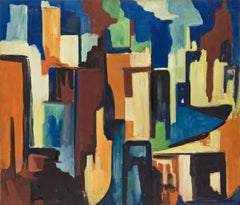Want more images or videos?
Request additional images or videos from the seller
1 of 11
Franz KlineChatham Square1948
1948
Price Upon Request
Price Upon Request
Price Upon Request
Price Upon Request
Price Upon Request
Price Upon Request
Price Upon Request
Price Upon Request
Price Upon Request
Price Upon Request
About the Item
Signed (at lower left): FRANZ KLINE
RECORDED: Elizabeth Johnson, “Franz Kline’s Roots in Coal and Steel—at Allentown Art Museum,” Artblog (December 21. 2012), illus. in color // Tim Keane, “Painting at the Speed of Sight: Franz Kline’s Rapid Transit,” Hyperallergic (March 2013) // Emily Genauer, “New Gallery; ‘Laundry-Ticket’ Art,” The New York Herald Tribune (October 1962), illus.
EXHIBITED: Washington Gallery of Modern Art, Washington, D.C., October 30–December 27, 1962; Rose Art Museum, Brandeis University, Waltham, Massachusetts, January 21–March 10, 1963; The Baltimore Museum of Art, Baltimore, April 14–May 20, 1963, Franz Kline Memorial Exhibition, pp. 21 fig. 33, 51 no. 33 // Baltimore Museum of Art, Baltimore, October 22–December 8, 1968, From El Greco to Pollock: Early and Late Works by European and American Artists // Cincinnati Art Museum, Cincinnati, November 27, 1985–March 2, 1986; San Francisco Museum of Modern Art, San Francisco, April 17–June 9, 1986; Pennsylvania Academy of the Fine Arts, Philadelphia, June 26–September 28, 1986, The Vital Gesture: Franz Kline in Retrospect, p. 51 fig. 49 illus. in color // Allentown Art Museum of the Lehigh Valley, Allentown, Pennsylvania, October 7, 2012–January 13, 2013; Mishkin Gallery, Baruch College, New York, February 8–March 5, 2013; Franz Kline: Coal and Steel, pp. 55 fig. 44 illus. in color, 111
EX COLL.: the artist; to I. David Orr (1904–1997), Long Island, New York; to his estate, 1997 until the present
Originally trained as a figurative painter, Kline was an exceptional draftsman. Unlike other post-war Abstract Expressionists who sought out European precedents, Kline embraced the urban landscape of New York City and rural industrial scenes around his childhood home of Wilkes-Barre, Pennsylvania. Marked by a distinctly realist approach, the street scenes, interiors, and portraits from this period show Kline grappling with what he wanted to paint and who he wanted to be as an artist. Although figurative in appearance, the paintings reveal the flattened space, reduction of form, bold outlines, and daring composition that would define Kline’s mature work.
- Creator:Franz Kline (1910 - 1962, American)
- Creation Year:1948
- Dimensions:Height: 41 in (104.14 cm)Width: 30 in (76.2 cm)
- Medium:
- Movement & Style:
- Period:
- Condition:
- Gallery Location:New York, NY
- Reference Number:Seller: M 10468D.0281stDibs: LU2316115722
Franz Kline
Franz Kline (1910 – 1962) was an American painter. He is associated with the Abstract Expressionist movement of the 1940s and 1950s. Kline, along with other action painters like Jackson Pollock, Willem de Kooning, Robert Motherwell and Lee Krasner, as well as local poets, dancers, and musicians came to be known as the informal group, the New York School. Although he explored the same innovations to painting as the other artists in this group, Kline's work is distinct in itself and has been revered since the 1950s. Kline was born in Wilkes-Barre, a small coal-mining community in Eastern Pennsylvania. He studied art at Boston University from 1931 to 1935, then spent a year at the Heatherley School of Fine Art in London where he met his future wife, Elizabeth V. Parsons, a British ballet dancer. She returned to the United States with Kline in 1938, and Kline worked as a designer for a department store in New York state. He moved to New York City in 1939 and worked for a scenic designer. It was during this time in New York that he developed his artistic techniques and gained recognition as a significant artist. He later taught at a number of institutions including Black Mountain College in North Carolina and the Pratt Institute in Brooklyn. He spent summers from 1956 to 1962 painting in Provincetown, Massachusetts. Kline's artistic training focused on traditional illustrating and drafting. During the late 1930s and early 1940s he worked figuratively, painting landscapes and cityscapes in addition to commissioned portraits and murals. His individual style can be first seen in the mural series Hot Jazz, which he painted for a New York bar in 1940. The series revealed his interest in breaking down representative forms into quick, rudimentary brushstrokes. The personal style he developed during this time, using simplified forms, became increasingly more abstract. Many of the figures he depicted are based on the locomotives, stark landscapes, and large mechanical shapes of his native, coal-mining community in Pennsylvania. This is sometimes only apparent to viewers because the pieces are named after those places and objects, not because they actually look like the subject. With the influence of the contemporary New York art scene, Kline worked further into abstraction and eventually abandoned representationalism. From the late 1940s onward, Kline began generalizing his figurative subjects into lines and planes which fit together much like the works of Cubism of the time.
About the Seller
5.0
Recognized Seller
These prestigious sellers are industry leaders and represent the highest echelon for item quality and design.
Established in 1952
1stDibs seller since 2010
35 sales on 1stDibs
Typical response time: 11 hours
Associations
Art Dealers Association of America
- ShippingRetrieving quote...Shipping from: New York, NY
- Return Policy
Authenticity Guarantee
In the unlikely event there’s an issue with an item’s authenticity, contact us within 1 year for a full refund. DetailsMoney-Back Guarantee
If your item is not as described, is damaged in transit, or does not arrive, contact us within 7 days for a full refund. Details24-Hour Cancellation
You have a 24-hour grace period in which to reconsider your purchase, with no questions asked.Vetted Professional Sellers
Our world-class sellers must adhere to strict standards for service and quality, maintaining the integrity of our listings.Price-Match Guarantee
If you find that a seller listed the same item for a lower price elsewhere, we’ll match it.Trusted Global Delivery
Our best-in-class carrier network provides specialized shipping options worldwide, including custom delivery.More From This Seller
View AllBelow South Ferry
By Franz Kline
Located in New York, NY
Signed (at lower right): KLINE
EXHIBITED: Pratt Institute, Brooklyn, New York, November 1–30, 1960, The November Show, as “Moonlight in Lower Manhattan” // Pratt Institute, Brooklyn...
Category
Mid-20th Century Abstract Expressionist Landscape Paintings
Materials
Oil, Board
Gloria
By Franz Kline
Located in New York, NY
Signed (at lower right): FK [in monogram}
EXHIBITED: Whitney Museum of American Art, New York, October 1–November 24, 1968; Dallas Museum of Fine Arts, Dallas, December 17, 1968–Jan...
Category
Mid-20th Century Abstract Expressionist Nude Paintings
Materials
Oil, Board
Price Upon Request
Seated Nude Figure
By Franz Kline
Located in New York, NY
Signed (at lower left): FK [in monogram]
EX COLL.: the artist; to I. David Orr (1904–1997), Long Island, New York; to his estate, 1997 until the present
Originally trained as a fig...
Category
Mid-20th Century Abstract Expressionist Nude Drawings and Watercolors
Materials
Paper, Watercolor, Ink
Seated Woman (Elizabeth)
By Franz Kline
Located in New York, NY
EX COLL.: the artist; to I. David Orr (1904–1997), Long Island, New York; to his estate, 1997 until the present
Originally trained as a figurative painter, Kline was an exceptional ...
Category
Mid-20th Century Abstract Expressionist Portrait Drawings and Watercolors
Materials
Pastel, Paper, Ink
Untitled
By Charles Houghton Howard
Located in New York, NY
Charles Houghton Howard was born in Montclair, New Jersey, the third of five children in a cultured and educated family with roots going back to the Massachusetts Bay colony. His father, John Galen Howard, was an architect who had trained at M.I.T. and the École des Beaux-Arts in Paris and apprenticed in Boston with Henry Hobson Richardson. In New York, the elder Howard worked for McKim, Mead and White before establishing a successful private practice. Mary Robertson Bradbury Howard, Charles’s mother, had studied art before her marriage. John Galen Howard moved his household to California in 1902 to assume the position of supervising architect of the new University of California campus at Berkeley and to serve as Professor of Architecture and the first Dean of the School of Architecture (established in 1903). The four Howard boys grew up to be artists and all married artists, leaving a combined family legacy of art making in the San Francisco Bay area that endures to this day, most notably in design, murals, and reliefs at the Coit Tower and in buildings on the Berkeley campus.
Charles Howard graduated from the University of California at Berkeley in 1921 as a journalism major and pursued graduate studies in English at Harvard and Columbia Universities before embarking on a two-year trip to Europe. Howard went to Europe as a would-be writer. But a near-religious experience, seeing a picture by Giorgione in a remote town outside of Venice, proved a life-altering epiphany. In his own words, “I cut the tour at once and hurried immediately back to Paris, to begin painting. I have been painting whenever I could ever since” (Charles Howard, “What Concerns Me,” Magazine of Art 39 [February 1946], p. 63). Giorgione’s achievement, in utilizing a structured and rational visual language of art to convey high emotion on canvas, instantly convinced Howard that painting, and not literature, offered the best vehicle to express what he wanted to say. Howard returned to the United States in 1925, confirmed in his intent to become an artist.
Howard settled in New York and supported himself as a painter in the decorating workshop of Louis Bouché and Rudolph Guertler, where he specialized in mural painting. Devoting spare time to his own work, he lived in Greenwich Village and immersed himself in the downtown avant-garde cultural milieu. The late 1920s and early 1930s were the years of Howard’s art apprenticeship. He never pursued formal art instruction, but his keen eye, depth of feeling, and intense commitment to the process of art making, allowed him to assimilate elements of painting intuitively from the wide variety of art that interested him. He found inspiration in the modernist movements of the day, both for their adherence to abstract formal qualities and for the cosmopolitan, international nature of the movements themselves. Influenced deeply by Surrealism, Howard was part of a group of American and European Surrealists clustered around Julien Levy. Levy opened his eponymously-named gallery in 1931, and rose to fame in January 1932, when he organized and hosted Surrealisme, the first ever exhibition of Surrealism in America, which included one work by Howard. Levy remained the preeminent force in advocating for Surrealism in America until he closed his gallery in 1949. Howard’s association with Levy in the early 1930s confirms the artist’s place among the avant-garde community in New York at that time.
In 1933, Howard left New York for London. It is likely that among the factors that led to the move were Howard’s desire to be a part of an international art community, as well as his marriage to English artist, Madge Knight...
Category
20th Century American Modern Abstract Drawings and Watercolors
Materials
Paper, Gouache, Graphite
Excavation
By Charles Houghton Howard
Located in New York, NY
Charles Houghton Howard was born in Montclair, New Jersey, the third of five children in a cultured and educated family with roots going back to the Massachusetts Bay colony. His father, John Galen Howard, was an architect who had trained at M.I.T. and the École des Beaux Arts in Paris, and apprenticed in Boston with H. H. Richardson. In New York, the elder Howard worked for McKim, Mead and White before establishing a successful private practice. Mary Robertson Bradbury, Charles’s mother, had studied art before her marriage. John Galen Howard moved his household to California in 1902 to assume the position of supervising architect of the new University of California campus at Berkeley and to serve as Professor of Architecture and the first Dean of the School of Architecture (established in 1903). The four Howard boys grew up to be artists and all married artists, leaving a combined family legacy of art making in the San Francisco Bay area that endures to this day, most notably in design, murals and reliefs at the Coit Tower and in buildings on the Berkeley campus.
Charles Howard graduated from the University of California at Berkeley in 1921 as a journalism major, and pursued graduate studies in English at Harvard and Columbia Universities before embarking on a two-year trip to Europe. Howard went to Europe as a would-be writer. But a near-religious experience, seeing a picture by Giorgione in a remote town outside of Venice, proved a life-altering epiphany. In his own words, “I cut the tour at once and hurried immediately back to Paris, to begin painting. I have been painting whenever I could ever since” (Charles Howard, “What Concerns Me,” Magazine of Art 39, no. 2 [February 1946], p. 63). Giorgione’s achievement, in utilizing a structured and rational visual language of art to convey high emotion on canvas, instantly convinced Howard that painting, and not literature, offered the best vehicle to express what he wanted to say. Howard returned to the United States in 1925, confirmed in his intent to become an artist.
Howard settled in New York and supported himself as a painter in the decorating workshop of Louis Bouché and Rudolph Guertler, where he specialized in mural painting. Devoting spare time to his own work, he lived in Greenwich Village and immersed himself in the downtown avant-garde cultural milieu. The late 1920s and early 1930s were the years of Howard’s art apprenticeship. He never pursued formal art instruction, but his keen eye, depth of feeling, and intense commitment to the process of art making, allowed him to assimilate elements of painting intuitively from the wide variety of art that interested him. He found inspiration in the modernist movements of the day, both for their adherence to abstract formal qualities and for the cosmopolitan, international nature of the movements themselves. Influenced deeply by Surrealism, Howard was part of a group of American and European Surrealists clustered around Julien Levy. Levy opened his eponymously-named gallery in 1931, and rose to fame in January 1932, when he organized and hosted Surrealisme, the first ever exhibition of Surrealism in America, which included one work by Howard. Levy remained the preeminent force in advocating for Surrealism in America until he closed his gallery in 1949. Howard’s association with Levy in the early 1930s confirms the artist’s place among the avant-garde community in New York at that time.
In 1933, Howard left New York for London. It is likely that among the factors that led to the move were Howard’s desire to be a part of an international art community, as well as his marriage to English artist, Madge Knight...
Category
20th Century American Modern Abstract Paintings
Materials
Canvas, Oil
You May Also Like
Still Life
By Franz Kline
Located in Bryn Mawr, PA
Provenance
Private Collection (acquired directly from the artist);
Parke-Bernet Galleries, New York, Sale #2326, 27 January 1965, Lot 168;
Private Collection (acquired from the abo...
Category
Mid-20th Century American Modern Still-life Paintings
Materials
Canvas, Oil
Untitled
By Franz Kline
Located in Beverly Hills, CA
Provenance:
Marlborough Gallery
David McKee, Inc.
Manny Silverman Gallery
Private collection, Los Angeles
Category
1950s Abstract Expressionist Abstract Drawings and Watercolors
Materials
Paper, Ink
$104,000 Sale Price
20% Off
Early Abstract Expressionist - Black Mountain College Teacher, Franz Kline
By Emerson Woelffer
Located in Miami, FL
With Abstract Expressionist painting, one could argue that the earlier, the more historically important. This stunning non-objective action painting is characterized by vast swaths o...
Category
1950s Abstract Expressionist Abstract Paintings
Materials
Oil, Fiberboard
Skyline (New York)
Located in New York, NY
Oil on canvas. Signed, titled on stretcher on recto.
Bartolomucci was an Italian painter who became one of the founders of Astralism. He moved to New York in 1960 where he remain...
Category
1960s Abstract Expressionist Landscape Paintings
Materials
Canvas, Oil
Abstract Expressionist "Forms Divide" Like Franz Kline
By Emerson Woelffer
Located in Miami, FL
It's 1951. Who was doing painting like this? Franz Kline, Arshile Gorky, Jackson Pollock, Mark Rothko, Willem de Kooning, Adolph Gottlieb, Clyfford Still, Robert Motherwell, Lee Kra...
Category
1950s Abstract Expressionist Abstract Paintings
Materials
Masonite, Acrylic
Early American Modernist Abstract Expressionist Framed Mid Century Oil Painting
Located in Buffalo, NY
Impressive early American modernist abstract oil painting. Framed. Oil on canvas.
Category
1960s Abstract Abstract Paintings
Materials
Canvas, Oil
$540 Sale Price
20% Off
Read More
With Works Like ‘Yours Truly,’ Arthur Dove Pioneered Abstract Art in America
New York gallery Hirschl & Adler is exhibiting the bold composition by Dove — who’s hailed as the first American abstract painter — at this year’s Winter Show.
Remarkably, Elizabeth Turk’s Sculptures Highlight the Lost Voices of Extinct Birds
In one of the first live and in-person exhibitions at a Manhattan gallery since last spring, the California-based sculptor gives the lost voices of endangered and extinct birds and animals a magnificent embodied form.
More Ways To Browse
Franz Kline Painting
Franz Kline Canvas
Chatham Painting
John Charles Terelak
Lago Maggiore
Laguna Beach Artists
Large Sky Oil Painting
Longhorn Cattle
Mountain House Art
Nantucket Oil Paintings
Nile Painting
Oil Painting Grand Canyon
Painting Of Lake District
Paintings With Coa
Paul Julian
Photorealism Landscape
Santorini Oil Painting
Seascape Lighthouse
